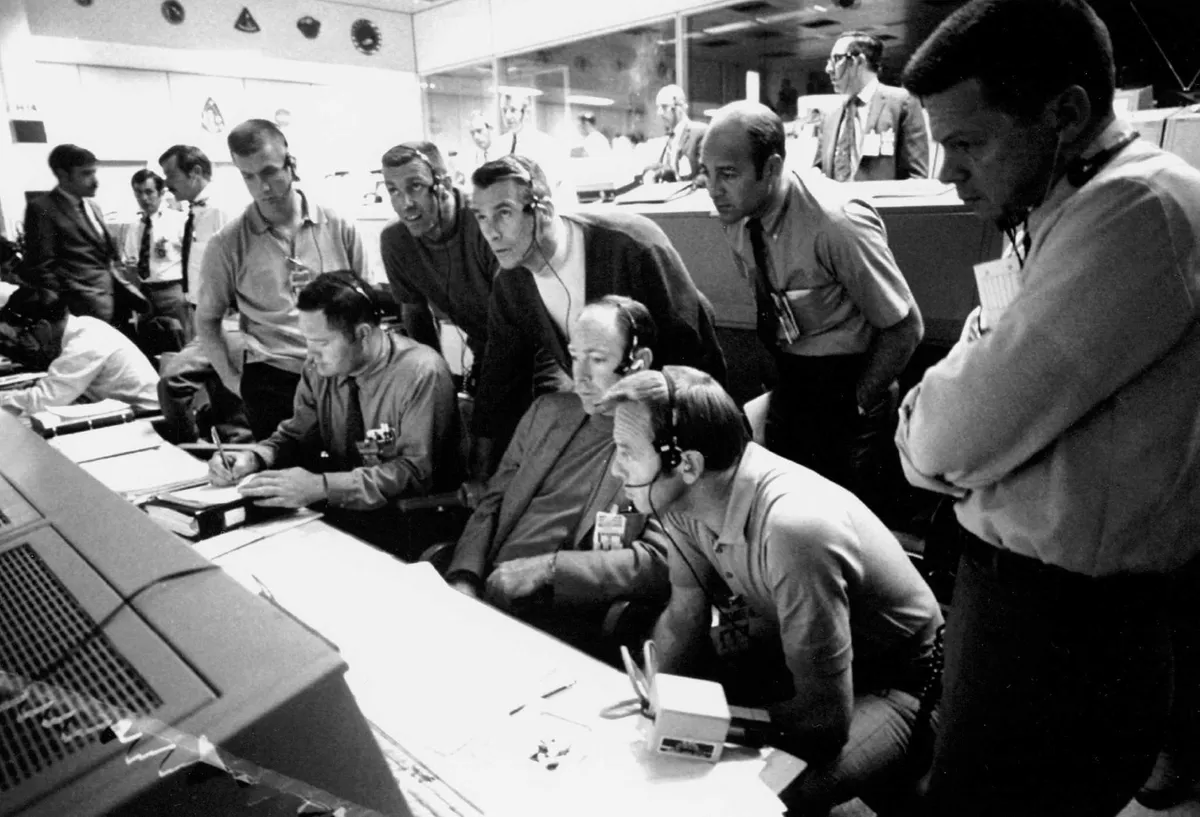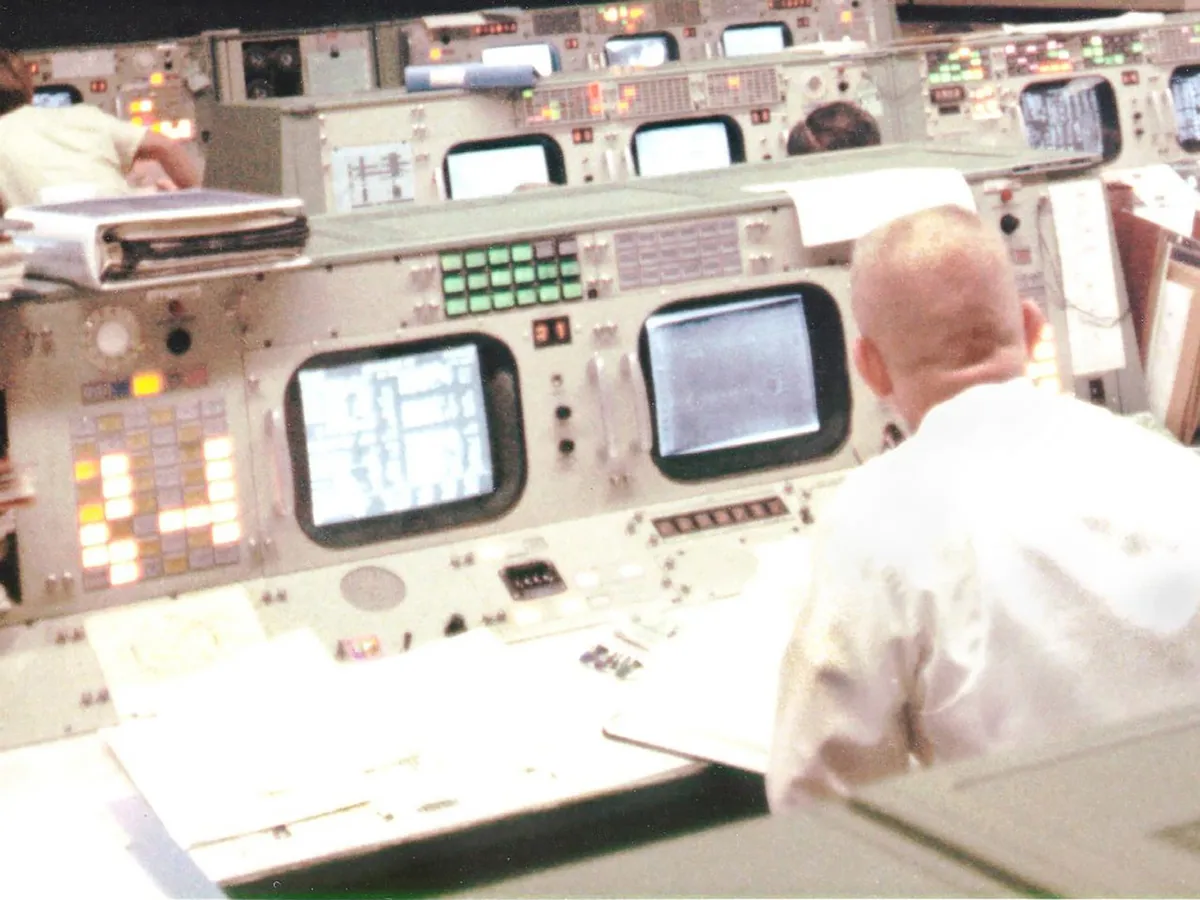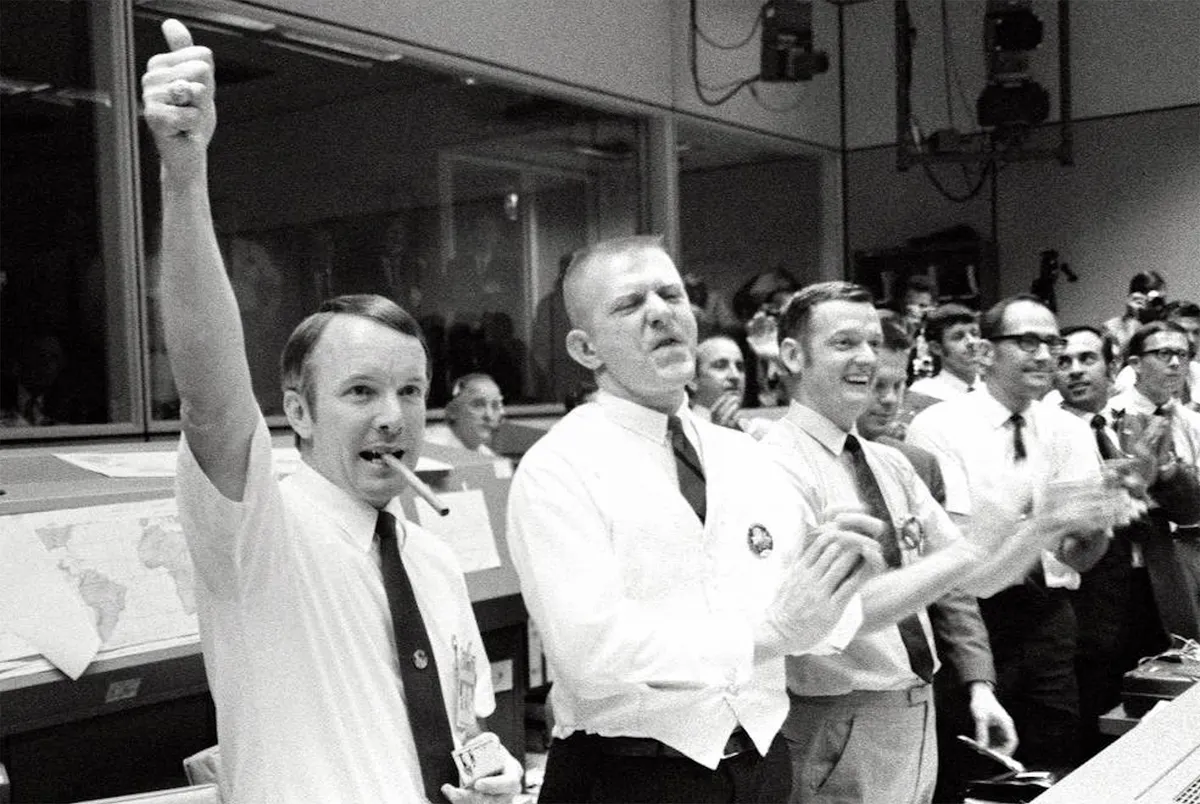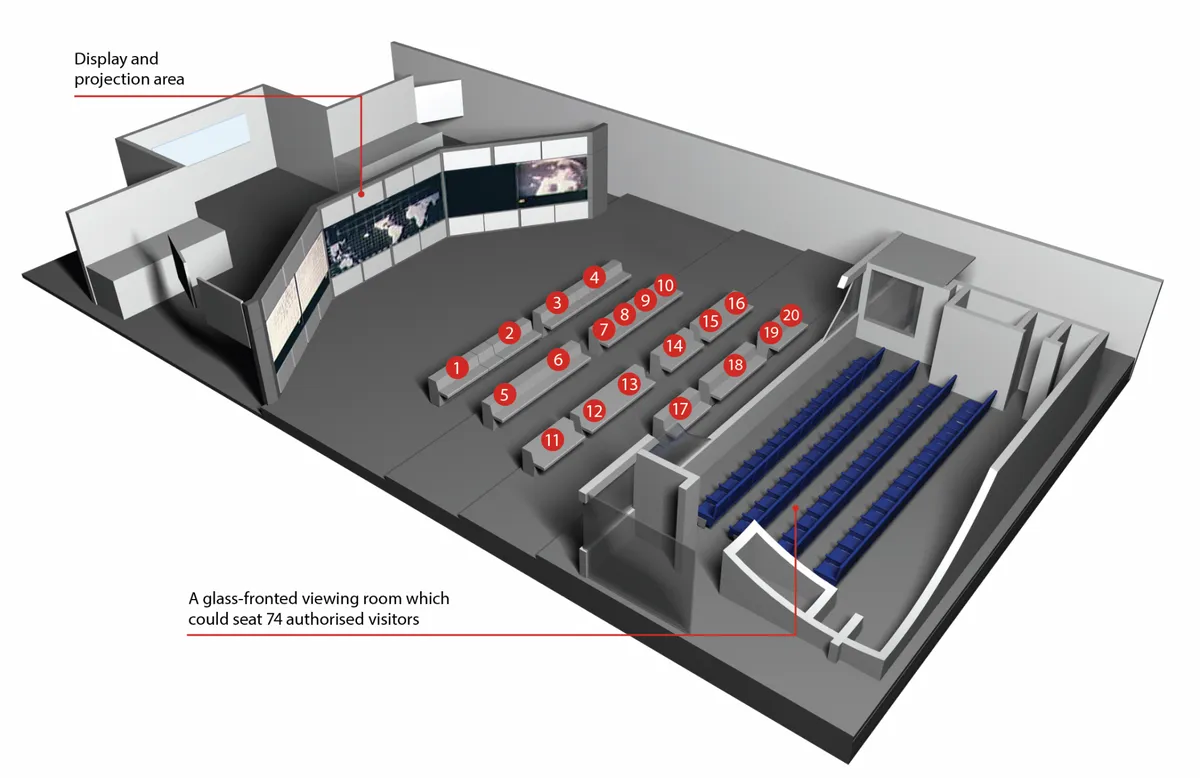Amidst the funereal atmosphere at NASA’s Mission Control Center in the days following the Apollo 1 fire in 1967, flight director Gene Kranz gathered his flight controllers and associated personnel in Building 30 to talk to them about the fire.
His words, though not recorded, have since been memorialised as “The Kranz Dictum”.
In part, he said: “Spaceflight will never tolerate carelessness, incapacity, and neglect… From this day forward, Flight Control will be known by two words: ‘Tough’ and ‘Competent’.
"Tough means we are forever accountable for what we do or what we fail to do. We will never again compromise our responsibilities. Every time we walk into Mission Control, we will know what we stand for.
"Competent means we will never take anything for granted. We will never be found short in our knowledge and in our skills. Mission Control will be perfect." And he meant it.
Read more about Apollo:
- An interview with Apollo engineer Jack Clemons
- Apollo 13: from the astronauts' perspective
- 10 facts about the Apollo Moon landing missions
On 14 April 1970 at 03:08 UT the personnel of Mission Control were about to earn their ‘Tough’ and ‘Competent’ stripes once again.
Just over two days into the mission, Jack Swigert radioed down from the Apollo 13 command module Odyssey, “Okay, Houston, we’ve had a problem here.”
The CAPCOM (capsule communicator), fellow astronaut Jack Lousma, asked him to repeat his message. Then Jim Lovell, the commander of the mission, said the words that still send a chill down the spine some 50 years later: “Houston, we’ve had a problem…”

Kranz was just handing off to the next shift of Mission Control personnel, led by fellow flight director Glynn Lunney, when the call came down.
As Kranz later wrote, “In the [Mission Control Center], you can’t see, smell, or touch a crisis except through the telemetry and the crew’s voice reports. But you can feel some instinct kicking in when something very wrong is going on.”
Something very wrong had just occurred.
After a muffled bang, two of the three fuel cells that powered the command module had shut down, and the interior of the command module was awash with the blaring of the master alarm and warning lights blazing across the console.
What was not yet clear was that one of two large oxygen tanks in the service module – which were critical not just for life support, but also for power via the fuel cells — had exploded due to a spark from a faulty thermostat inside.
To make matters worse, the piping from the second tank had been damaged. In less than three hours, both tanks would be empty, the oxygen supply depleted, and the command module dead and cold as a meat freezer.
It took about 15 minutes for Mission Control to determine the scope of what was now an in-flight emergency.
The strange numeric readouts that the flight controllers were seeing on their screens had coalesced into an understandable set of problems, and those controllers – whose average age was just 27 – were now working in tight coordination to get their crew home.
They were backed by dozens of other experts in the ‘back rooms’ of Building 30 at the Johnson Space Center, and by engineers and experts from the various contractors all over the country.
The spacecraft was about 300,000km from Earth, and just 72,000km from the Moon. Decisions would have to be made quickly.
Fortunately, Mission Control already had a plan in hand, informally referred to as the ‘lunar module lifeboat’ plan.
Kranz’s White Team (each of the three shifts were colour coded) gathered up all the data available to them, then turned over the control room to Lunney’s Black Team.
“I wanted to get the White Team off-line, get them together in a quiet corner, nail down the cause, and then start on a plan to rescue the crew,” he later said.
At this point, they had two options: a direct abort, which would involve firing up the main engine on the service module and performing a long burn to blunt their velocity and send them back to Earth without flying past the Moon, or allowing the spacecraft to sling past the Moon – an option called ‘free return’ – to hurtle Earthward with the assist of lunar gravity and navigation provided by the lunar module’s smaller descent engine.
While both options were considered, there were concerns about power and worries that the service module’s main engine might have been damaged by the explosion and could in turn blow up if ignited.
A direct abort would also necessitate jettisoning the lunar module, an option few were comfortable with.
The best option, it seemed, was to allow the spacecraft to loop the Moon. But that would take two additional days in space and oxygen, water (needed for drinking and cooling the hot 1960s electronics), and power (the lunar module ran off batteries) were in short supply.
At least one of these commodities would come up 36 hours short.
Kranz’s White Team relocated to another room to discuss options and find solutions. Controllers carried reams of data printouts, cigarette smoke filled the air, and dozens of voices competed for attention.
Kranz commanded the room to silence and asked three engineers to come front and centre — Arnie Aldrich, Bill Peters, and John Aaron.
Kranz declared that the White Team was now offline — they would return to Mission Control only for critical mission events.

He assigned Aldrich to build the rescue mission timeline, Peters to oversee the use of the lunar module as a lifeboat, and Aaron to budget life support, water and power.
“Whatever any of these three ask of you, you will do,” he told the room.
He then added, “When you leave this room you will pass no uncertainty to our people. They must become believers if we are to succeed.”
Strong leadership and a sense of inevitable victory were as critical as the numbers now. “Flight Control will never lose an American in space,” he added with a steely glare.
By the time Kranz returned to Mission Control, he learned that they would have to use the rapidly depleting lunar module batteries keep the power-hungry guidance computer running until their mid-course burn many hours away.
John Aaron’s challenge was now a near-impossibility, and he would not return to his console until reentry days later.
A day after the explosion and two hours after passing the Moon, the crew performed the burn that would put them on a proper return trajectory for Earth.
When you leave this room you will pass no uncertainty to our people. They must become believers if we are to succeed.
Gene Kranz
Success was by no means a foregone conclusion — the combined lunar module/command service module ‘stack’ was never designed to be manoeuvred by the lunar module’s main engine.
But, as with most contingencies, it had been planned for, simulated and even tested on Apollo 9.
But with one problem solved, another took its place almost immediately. The carbon dioxide levels inside the spacecraft were rising to toxic levels.
The CO2 scrubbers on the lunar module were depleted, and the crew would soon need to use the scrubbers from the command module.
The lunar module’s filters were round, however, and those on the command module were square — they were not interchangeable.
Fortunately, there had been a simulation prior to Apollo 8 that involved a similar problem, and fellow astronaut Joe Kerwin, who was familiar with the procedure, quickly brought everyone up to speed.
The crew would fabricate an adaptor using a sock, plastic bags, a sheet of cardboard and duct tape. The fix worked and CO2 levels gradually fell as the adapted scrubber did its work.

There were also astronauts in the command module simulator testing reentry procedures for the stricken spacecraft – it would have to be revived from the dead to complete the trip home.
This would be touch-and-go, as the crew was dehydrated, sleep deprived and they were enduring near-freezing temperatures – all conditions which could conspire to trip up critical manoeuvres.
Their list of procedures was 39 pages long, all 400 steps would have to go right for success.
Mission Control, and the many people and organisations that backed them, worked tirelessly to make it as foolproof as possible.
As Kranz had predicted after Apollo 1, Mission Control would indeed be perfect.
On 17 April, in the dead of night – not that day or night meant much to any of the sleep-deprived controllers now – Kranz’s White Team took to their consoles for the final stretch.
Most of the White Team members had been working almost continuously for the past 80 hours with short naps to take the edge off.
Caffeine and tobacco held them together as the last of the long list of procedures were read up to the exhausted crew by the CAPCOM, who was surrounded by three other astronauts to make sure there were no errors.
Our crew was home. We had done the impossible. The human factor had carried the day.
Gene Kranz
Then the service module was ejected, and the crew saw that the damage stretched from its top down across the rocket nozzle.
Kranz, and many others, were doubly glad that they had not elected to attempt the direct abort — the service module’s engine might well have exploded.
Kranz polled his team and gave the order: “Go for entry.” Not that there were many alternatives.
Apollo 13 was headed into the atmosphere like a freight train going 40,000 km/h.
The room grew mostly still until Swigert radioed down, “I know all of us here want to thank all you guys down there for the very fine job you did.” More than one controller was misty-eyed.
Then the crew went silent, as Apollo 13 descended into blackout, the period in which radio communications are obliterated by the fury of reentry.
As Kranz later put it, “Everything was now irreversible.” All Mission Control, and the millions across the nation and the planet who were listening in, could do now was to wait.

Shortly after the countdown timer passed 00:00:00, CAPCOM Joe Kerwin attempted to contact the crew:
“Odyssey, Houston. Standing by.” Nothing but static answered him. One minute passed, then another 30 seconds ticked by.
Increasingly anxious, Kranz inquired if the clocks were accurate... they were. He slammed his fist on his console, drawing surprised looks from tense controllers.
Finally, after more attempts at contact, they heard “Okay, Joe,” from Swigert.
Cheers erupted as three parachutes blossomed into view. In Mission Control and the viewing room, in the support rooms, at the many contractors across the nation, and in public spaces from New York’s Grand Central Station to countless places across the world, people clapped, cheered and exalted in the moment.
The emergency of Apollo 13 was over – human ingenuity and spirit had triumphed in space once again.
Completely spent, Kranz slumped in his government-issue chair. The hard-as-nails flight director loosened his grip for a moment and cried.
He tried to hold it in, but it was for naught. Days of stress, anxiety and concern spilled out in a warm rush of gratitude.
“Our crew was home,” he recalled. “We – crew, contractors, controllers – had done the impossible. The human factor had carried the day.”
Inside Mission Control

Mission Control at the Johnson Space Center in Houston, Texas, is where all of NASA’s human spaceflights have been run since the Gemini Program.
The control rooms are called Mission Operation Control Rooms (MOCR) and the Apollo-era MOCR is now a national landmark and was recently restored to its original condition.
Mission Control 2, the one used for the Gemini, Apollo and early Shuttle programmes, is arranged in four rows of interconnected consoles that reach across the room with large rear-projection screens at the front.
The front row consisted of stations called 1. Booster (Booster systems engineer; monitoring rocket systems), 2. RETRO (Retrofire Officer; reentry procedures and leaving orbits), 3. FDO (Flight Dynamics Officer; trajectories and aborts), and 4. GUIDO (Guidance Officer; flight computers, navigation and guidance). Some stations were staffed by one person, and others had multiple controllers.
The second row consisted of 5. Surgeon (the doctor who monitored the astronauts’ health), 6. CAPCOM (Capsule Communicator; the astronaut who was the sole point of contact with the flight crew), 7. EECOM (Electric, Environmental and Consumables Manager; fuel cells, cooling systems, electrical and cabin pressure systems), 8. GNC (Guidance, Navigation and Control engineer; guidance and trajectory flight hardware, as well as manoeuvring systems), 9. TELMU (Telemetry, Electrical and EVA Mobility Unit; lunar module systems and spacesuits), and 10. CONTROL (responsible for the lunar module's electrical and propulsion systems). TELMU was quite busy during Apollo 13 when the lunar module became a lifeboat for the crew.
On the third row was 11. INCO (Instrumentation and Communications Officer; for voice, telemetry and video communications systems), 12. O&P (Operations and Procedures; ensuring the pre-written procedures were followed during flight), 13. AFLIGHT (Assistant Flight director), 14. FLIGHT (Flight director; in charge of the room and the mission), 15. FAO (Flight Activities Officer; overseeing all crew activities), and 16. NETWORK (Network controller; to oversee the ground network of communication stations – not used during the Apollo 13 mission).
The fourth row contained the 17. PAO (Public Affairs Officer), 18. DFO (Director of Flight Operations; linked Mission Control and Johnson Space Center management), 19. HQ (linked Mission Control to NASA headquarters), and 20. DOD (Department of Defense; linked Mission Control and recovery forces at sea).
This fourth and final row was reserved for NASA management to observe during the flight, but the flight director was the ultimate authority in the room.
By design and dint of hard work, Mission Control remains one of the finest examples of leadership and teamwork in modern history.
Rod Pyle is the author of 15 space books and editor-in-chief of Ad Astra magazine for the US National Space Society.